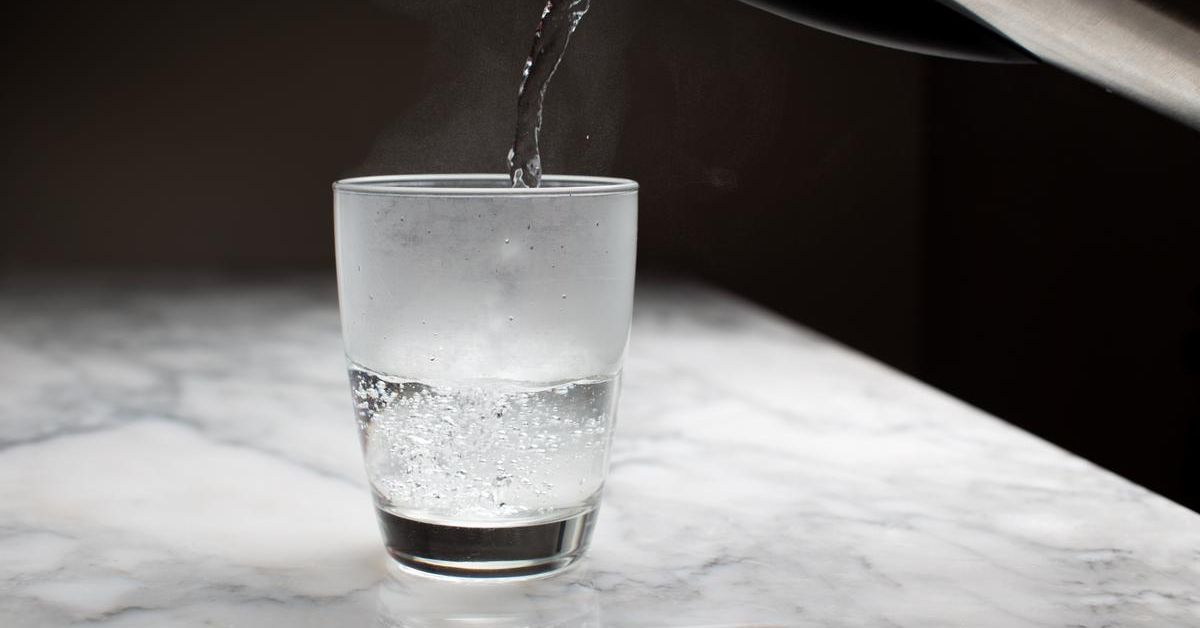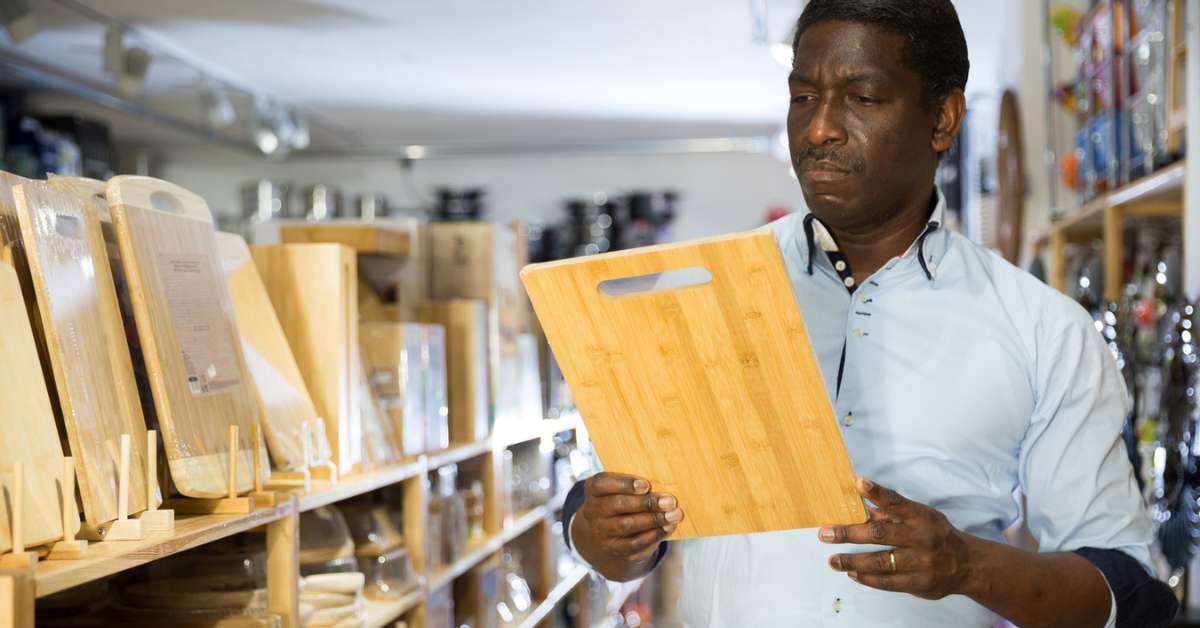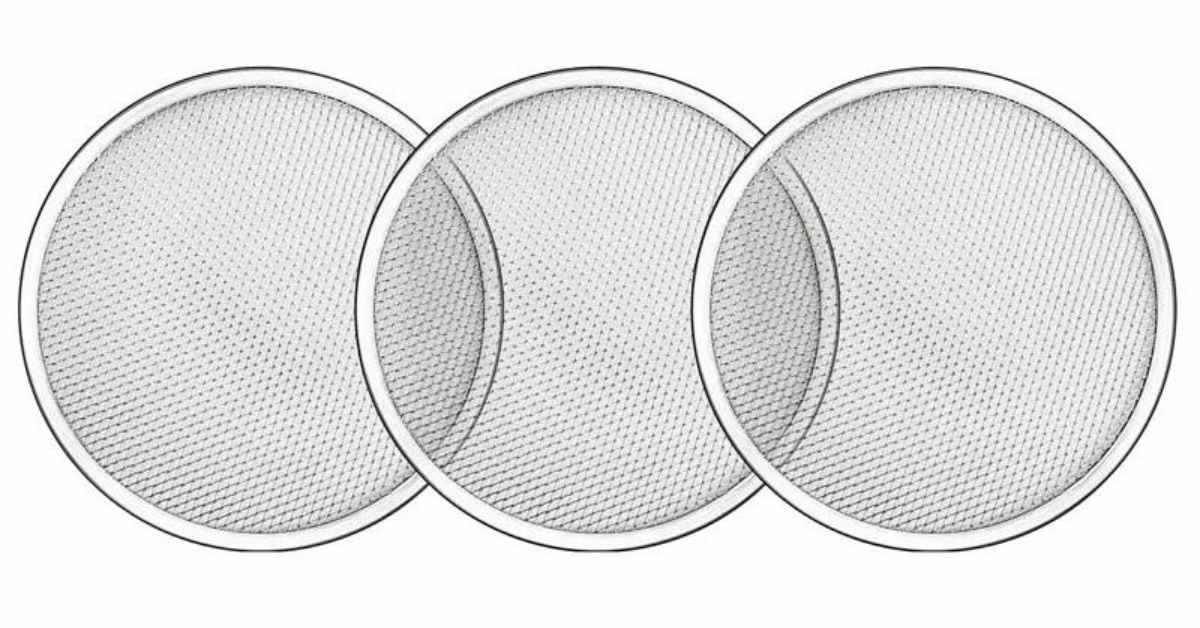In our everyday lives, we often encounter situations where we need to quickly cool down hot objects, such as a glass dish or a container. A common question arises: “Will hot glass break in the refrigerator?”
This article aims to provide a comprehensive answer to this intriguing question, shedding light on the science behind the phenomenon and its practical implications. By understanding the factors at play, we can ensure the safety of our glassware and make informed decisions when it comes to cooling hot objects in the refrigerator.
In the upcoming sections, we will examine the various factors that come into play, the properties of glass, and the impact of temperature differentials. By the end of this article, you’ll understand whether it’s safe to put hot drinks in the refrigerator and the precautions you should take. So, let’s dive in and uncover the truth behind this common query.
Table of Contents
ToggleHow Thermal Shock Affects Glass

Glass is a unique material with its properties that make it versatile and fragile. Understanding how thermal shock affects glass is essential to comprehend the potential risks of exposing hot glass to the refrigerator’s cold environment.
Typically composed of silica, glass is an amorphous solid material known for its transparency and durability. However, glass is susceptible to thermal shock despite its strength, which refers to the rapid temperature change that can cause it to fracture or break.
When glass experiences sudden changes in temperature, such as placing hot glassware in a cold refrigerator, it develops internal stress. This stress arises from the uneven expansion or contraction of different glass parts caused by the temperature differential. The outer layers of the glass react differently from the inner layers, creating tension within the material.
Several factors contribute to the occurrence of thermal shock in the glass. One common cause is exposing hot drinks to a cold environment, such as transferring a glass baking dish from the oven to the refrigerator. This sudden exposure to lower temperatures causes the outer layers of the glass to contract more rapidly than the inner layers, resulting in a high-stress situation.
The thermal shock resistance of glass depends on various factors. The composition of the glass, its thickness, and the rate of temperature change all play a role in determining its ability to withstand thermal shock. Certain types of glass, such as borosilicate glass commonly used in cookware, exhibit higher resistance to thermal shock due to their lower coefficient of thermal expansion.
What is the Science Behind Cooling and Temperature
Cooling is crucial in preserving various materials, including food and beverages. Understanding the science behind cooling and its impact on glass is essential to grasp the relationship between temperature differentials and thermal shock.
When an object is cooled, its temperature decreases, causing its molecules to slow down and move closer together. This reduction in molecular activity helps preserve perishable items by slowing down chemical reactions and inhibiting the growth of bacteria.
Several factors influence the cooling rate, such as the surrounding temperature, the material’s conductivity, and the surface area exposed to the cooling medium. The ideal cooling temperature varies depending on the specific item, as certain foods or beverages require specific temperature ranges for optimal preservation.
Rapid cooling can significantly impact glass and other materials, mainly when a sudden temperature is differential. As mentioned, glass is susceptible to thermal shock when exposed to varying temperatures due to its uneven expansion or contraction. When subjected to rapid cooling, the outer layers of glass contract more rapidly than the inner layers, leading to internal stress and potentially resulting in breakage or fracture.
The relationship between temperature and thermal shock resistance is crucial when considering whether to place hot glass in the refrigerator. Drink with a higher thermal shock resistance can withstand rapid temperature changes more effectively. Various types of glass, such as borosilicate glass, are engineered to have lower coefficients of thermal expansion, making them more resistant to thermal shock.
Glass and Refrigeration: Myths and Facts
Several myths and misconceptions have circulated over time when putting hot glass in the refrigerator. This section will debunk these myths and provide facts about cooling hot drinks.
Myth 1: Hot glass will always break in the refrigerator.
The truth is that not all hot glass will break when placed in the refrigerator. The outcome depends on various factors, such as the type of glass, its thickness, and the rate of temperature change. While some types of glass are more prone to thermal shock and may break, others, like borosilicate glass, have higher thermal shock resistance and can withstand the temperature differential without shattering.
Myth 2: Cooling hot glass quickly will prevent it from breaking.
Contrary to popular belief, rapidly cooling hot glass does not necessarily prevent it from breaking. Rapid cooling can sometimes increase the risk of thermal shock and fracture. It is crucial to consider the glass’s specific characteristics and follow proper cooling guidelines to minimize the chances of breakage.
Myth 3: Placing the hot glass on a hot pad or towel before refrigeration prevents breakage.
While it may seem logical to place hot glass on a hot pad or towel before transferring it to the refrigerator, this practice does not guarantee the prevention of breakage. The external temperature of the glass alone is not the sole factor determining thermal shock. The rate of temperature change and the internal stress within the glass also play crucial roles.
The Effect of Temperature on Glass
The temperature has a profound effect on glass and its properties. Understanding how temperature impacts glass can provide valuable insights into its behavior, including thermal shock resistance and changes in physical properties.
Varying temperatures cause the molecular structure and behavior of glass to transform. Glass transition temperature (Tg) is a critical point at which glass transitions from a rigid, solid-like state to a more dense, liquid-like state. This temperature range varies depending on the composition of the glass.
Cooling hot glass influences its temperature and properties. As the glass cools down, its molecules slow down, causing it to become more rigid and less prone to flow. Cooling also affects the glass’s thermal expansion and contraction, leading to internal stress. If the temperature change is too rapid, the pressure can exceed the glass’s ability to withstand it, resulting in thermal shock and potential breakage.
Temperature plays a significant role in determining the thermal shock resistance of glass. Different types of glass have varying coefficients of thermal expansion, which affect how they respond to temperature changes. Glasses with higher thermal shock resistance can handle rapid temperature differentials more effectively without breaking.
How to Cool Hot Glass: Best Practices
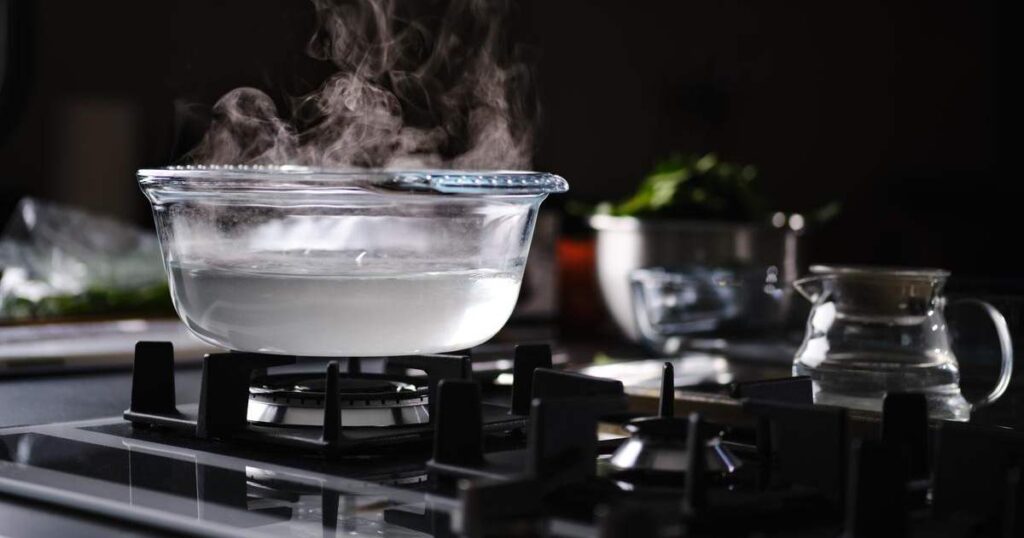
Properly cooling hot glass is essential to minimize the risk of thermal shock and potential breakage. This section will discuss the best practices for cooling hot drinks safely and effectively.
The ideal temperature for cooling hot glass is room temperature or slightly warmer. Gradual temperature changes help minimize stress within the mirror, reducing the likelihood of thermal shock. Avoid exposing hot drinks to frigid temperatures, such as placing them in the refrigerator or freezer.
Precautions to Take Before Putting Hot Glass in the Refrigerator
Before placing hot glass in the refrigerator, there are a few precautions you should take:
- Allow the glassware to cool naturally: Let the hot drink cool at room temperature before considering refrigeration. This gradual cooling process allows the glass to adjust to the temperature changes more smoothly.
- Check for cracks or damage: Inspect the glassware for any existing cracks or damage. Hot drink with pre-existing flaws is more susceptible to breakage when exposed to rapid temperature changes. It’s best to avoid refrigerating compromised glassware altogether.
Proper Cooling Techniques For Hot Glass
To cool hot glass safely, follow these techniques:
- Use a cooling rack or trivet: Place the hot glassware on a cooling rack or trivet to ensure proper airflow around the glass. This helps facilitate gradual cooling and prevents localized temperature differentials within the mirror.
- Avoid direct contact with cold surfaces: Do not place hot glass directly on hard surfaces such as countertops, metal, or ceramic. Using a trivet or a cloth barrier between the glass and the texture helps reduce the risk of sudden temperature changes.
Common Mistakes to Avoid When Cooling Hot Glass
To prevent thermal shock and breakage, avoid the following mistakes:
- Placing hot glass in the freezer: Freezers often have much lower temperatures than refrigerators, which can cause rapid temperature differentials and increase the risk of thermal shock. Avoid placing hot glass directly in the freezer.
- Using cold water for rapid cooling: Plunging hot glass into cold water or running it under cold water can create drastic temperature changes. This abrupt cooling can lead to thermal shock and potential breakage. Gradual cooling at room temperature is safer.
Risks of Cooling Hot Glass in the Refrigerator
While cooling hot glass in the refrigerator is a common practice, it’s essential to be aware of the potential risks associated with this method. This section will discuss the risks involved and the precautions you can take to mitigate them.
Potential Risks Associated With Cooling Hot Glass in the Refrigerator
Thermal shock and breakage: The rapid temperature change can lead to thermal shock when placing hot glass directly in the refrigerator. This stress on the glass can cause it to fracture or break.
Health and safety hazards: Placing hot glass in the refrigerator without proper precautions can pose health and safety hazards. For example, the sudden release of steam or condensation from the hot drink can cause burns or create a moist environment that promotes bacterial growth.
Risks of damage to the glassware or refrigerator: Placing hot glass directly on cold surfaces in the fridge can cause damage to both the glassware and the refrigerator shelves. Sudden temperature differentials and contact with hard surfaces increase the likelihood of breakage or scratching.
Alternative Way to Cooling Hot Glass in the Refrigerator
Alternative approaches are available, while the refrigerator is a standard method for cooling hot glass. This section will explore different ways of cooling hot drinks, compare their effectiveness, and discuss their advantages and disadvantages.
Other Methods of Cooling Hot Glass
Room temperature cooling: Allowing hot glass to cool naturally at room temperature is a straightforward and effective method. Place the hot glassware on a heat-resistant surface and let it cool gradually. This method minimizes the risk of thermal shock and is suitable for most types of glass.
Water bath cooling: Submerging hot glass in a lukewarm water bath can expedite the process. Fill a basin or sink with water slightly warmer than room temperature and place the glassware in it. Stirring the water gently can help distribute the heat evenly and promote faster cooling.
Ambient air cooling: Utilizing the surrounding air for cooling is another option. You can place the hot glass in a well-ventilated area, away from drafts or temperature extremes. The air circulating the glass helps facilitate gradual cooling.
Comparing the Effectiveness of Different Cooling Methods
The effectiveness of each cooling method depends on factors such as the glass type, the glassware’s thickness, and the hot glass’s initial temperature. Room temperature and water bath cooling are generally adequate for most situations, allowing the glass to cool gradually and minimizing the risk of thermal shock.
Advantages and disadvantages of each method:
Room temperature cooling:
- Advantages: Simple and convenient, suitable for most types of glassware.
- Disadvantages: Cooling may take longer compared to other methods.
Water bath cooling:
- Advantages: Speeds up the cooling process and provides more control over the temperature change.
- Disadvantages: Requires access to a water source and a basin or sink large enough to accommodate the glassware.
Ambient air cooling:
- Advantages: No additional resources are required, and it is suitable for situations where water or refrigerator access is unavailable.
- Disadvantages: Cooling time may vary depending on the ambient temperature and airflow.
Practical tips for cooling hot glass without a refrigerator:
- Handle with care: When using alternative cooling methods, handle the hot glassware with oven mitts or protective gloves to avoid burns or injuries.
- Use timers or temperature monitoring: Keep track of the cooling time to ensure the glassware reaches an appropriate temperature for safe handling.
- Avoid drastic temperature changes: Whichever method you choose, aim for gradual temperature changes to minimize the risk of thermal shock. Avoid placing hot glass directly in cold water or exposing it to extreme temperature differentials.
How to Choose Glassware for Refrigeration
Choosing the proper glassware for refrigeration is crucial to ensure the safety of the glassware and maintain the quality of its contents. This section will discuss the glassware options suitable for refrigeration, factors to consider when selecting glassware, and tips for purchasing the appropriate glassware.
Glassware Suitable for Refrigeration
Borosilicate glass: Borosilicate glass is known for its high thermal shock resistance. It can withstand rapid temperature changes without breaking, making it an excellent choice for refrigeration. Frequently, laboratory glassware and specific kitchenware brands use this type of glass.
Tempered glass: Manufacturers treat tempered glass to enhance its durability and resistance to thermal stress. Its design enables it to withstand rapid temperature changes, making it a common choice for bakeware, food storage containers, and certain drinkware.
Glass with thick walls: Glassware with thicker walls tends to have better insulation properties and can handle temperature changes more effectively. Look for glassware designed explicitly for refrigeration purposes and has a thicker construction.
Factors to Consider When Selecting Glassware for Refrigeration
Thermal shock resistance: Ensure the chosen glassware has good thermal shock resistance. This property determines how well the glass can withstand sudden temperature changes without breaking.
Glass thickness: Consider the thickness of the glassware. Thicker glass provides better insulation and can handle temperature differentials more effectively.
Purpose and usage: Consider the specific purpose for which you intend to use the glassware in the refrigerator. Different types of glassware are designed for various applications, such as storing leftovers, preserving beverages, or organizing ingredients.
Tips for purchasing glassware suitable for refrigeration:
- Look for reputable brands: Opt for glassware from trusted and respected brands known for their quality and durability.
- Read product descriptions: Pay attention to manufacturers’ product descriptions and specifications. Look for information regarding the glassware’s thermal shock resistance and suitability for refrigeration.
- Check customer reviews: Before purchasing, read customer reviews to understand the glassware’s performance and reliability when refrigerated.
- Consider the lid or closure: If you plan to use the glassware for storing liquids or perishable items, ensure that it comes with a well-fitting cover or closure to maintain freshness and prevent leaks.
The Best Types of Glass for Refrigeration
Selecting the correct type of glass for refrigeration is essential to ensure the safety and effectiveness of storing items. In this section, we will explore the best types of glass for refrigeration, their advantages, and disadvantages, compare different options, and provide tips on identifying glassware ideal for refrigeration.
The Types of Glass Best Suited for Refrigeration
Borosilicate glass: Borosilicate glass is widely considered one of the best options for refrigeration. It is known for its exceptional thermal shock resistance, which can withstand rapid temperature changes without breaking. Borosilicate glass is durable, transparent, and commonly used in laboratory glassware and certain kitchenware brands.
Tempered glass: Tempered glass is another popular choice for refrigeration. It undergoes a specialized heat treatment process that strengthens its structure and makes it more resistant to thermal stress. Tempered glass is durable, shatter-resistant, and can handle temperature changes effectively. Bakeware, food storage containers, and drinkware commonly use it.
Advantages and Disadvantages of Different Types of Glass
Borosilicate glass:
- Advantages: It possesses high thermal shock resistance, durability, transparency, and suitability for various temperatures.
- Disadvantages: It can be more expensive than other glass types and not as widely available in all shapes and sizes.
Tempered glass:
- Advantages: Strong and shatter-resistant, resistant to thermal stress, readily available in various shapes and sizes.
- Disadvantages: It may have a slight tint and not as high thermal shock resistance as borosilicate glass.
Comparison of Different Types of Glass
Borosilicate and tempered glass are excellent choices for refrigeration, but they have slight differences in their properties. Borosilicate glass offers exceptional thermal shock resistance, making it ideal for extreme temperature changes, while tempered glass provides strength and durability, with good resistance to thermal stress.
How to Identify Glassware Ideal for Refrigeration
Look for specific glass types: Check the product labels or descriptions for glassware made from borosilicate or tempered glass. Manufacturers often highlight these properties to indicate suitability for refrigeration.
Read customer reviews and recommendations: Research customer reviews and recommendations for glassware that has been tested and proven effective for refrigeration. Feedback from others who have used glassware in refrigeration can provide valuable insights.
Assess the manufacturer’s reputation: Choose glassware from reputable manufacturers known for its quality and reliability. Trusted brands often use glass suitable for refrigeration and provide precise product information.
How to Care and Maintenance of Glassware
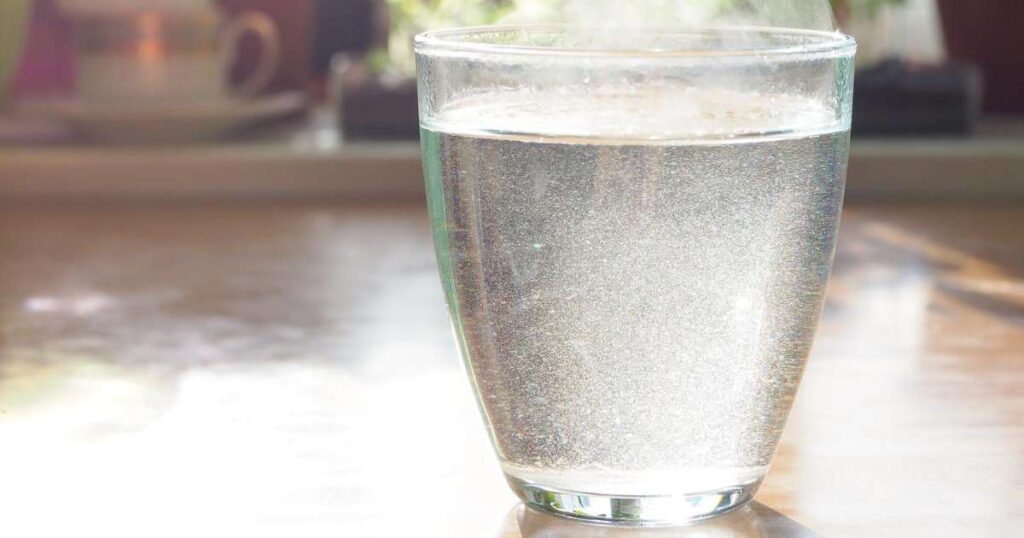
Proper care and maintenance of glassware are essential to ensure its longevity and preserve its quality. This section will discuss best practices for cleaning and maintaining glassware, handling and storing it correctly, the impact of improper care and maintenance, and tips for maximizing its longevity.
Best Practices for Cleaning and Maintaining Glassware
Handwashing: Wash your glassware using warm water and mild dish soap whenever possible. Avoid using harsh abrasives or scouring pads that can scratch the glass surface.
Gentle scrubbing: Use a non-abrasive sponge or brush to scrub the glassware gently for stubborn stains or residue. Rinse thoroughly to remove all soap residue.
Avoid extreme temperature changes: Glassware is sensitive to rapid temperature changes, so avoid subjecting it to extreme temperature differentials. Allow it to cool down or warm up gradually to prevent thermal shock.
Dry carefully: After washing, dry the glassware with a soft, lint-free cloth or let it air dry. Avoid using paper towels that can leave lint or scratch the glass.
How to Handle and Store Glassware Properly
Please handle with care: When handling glassware, hold it securely to prevent accidental drops or slips. Avoid banging or clinking glassware against hard surfaces, which can cause chipping or breakage.
Use appropriate storage methods: Store glassware in a clean and dry environment, away from direct sunlight and extreme temperatures. Use dividers or cushioning materials when stacking glassware to prevent them from touching or knocking against each other.
The Impact of Improper Care and Maintenance on Glassware
Improper care and maintenance can have several adverse effects on glassware:
Reduced lifespan: Neglecting proper care can lead to scratches, stains, or weakened glass, shortening the lifespan of the glassware.
Loss of clarity and brilliance: Using abrasive cleaners can lead to a cloudy or dull appearance, diminishing the clarity and brightness of the glassware. Poor cleaning practices are responsible for this effect.
Tips for maximizing the longevity of glassware:
- Avoid the dishwasher: Although some glassware is labeled dishwasher-safe, handwashing is generally gentler and helps maintain the glassware’s condition for longer.
- Handle with soft gloves: When handling delicate or valuable glassware, consider wearing soft cotton gloves to minimize the risk of fingerprints or smudges.
- Store upright: For stemware or fragile glassware, store them upright to reduce the risk of tipping or damage.
Common Causes of Glass Breakage
Glass breakage can occur for various reasons, and understanding the common causes can help you prevent accidents and maintain the integrity of your glassware. This section will explore the most common causes of glass breakage, how to identify signs of damage in glassware, the importance of proper handling and care, and steps to take when glassware breaks.
The Most Common Causes of Glass Breakage
Thermal shock: Sudden and extreme temperature changes can cause the glass to break. For example, placing hot glassware directly into cold water or exposing it to a significant temperature differential can lead to thermal stress and breakage.
Physical impact: Glassware can break when subjected to physical force or effects, such as dropping it on a hard surface, hitting it against another object, or mishandling it during cleaning or storage.
Scratches and defects: Glassware with scratches, chips, or manufacturing defects is more prone to breakage. These imperfections weaken the glass structure and make it susceptible to cracking or shattering.
Identifying Signs of Damage in Glassware
Visible cracks or chips: Inspect your glassware regularly for any visible cracks, chips, or fractures. Even tiny attempts can compromise the structural integrity of the glass and increase the risk of breakage.
Dull or cloudy appearance: Glassware that appears dirty or has a soft surface might indicate etching or damage. This can weaken the glass and make it more susceptible to breakage.
The Role of Proper Handling and Care in Preventing Breakage
Gentle handling: Handle glassware with care, avoiding rough or excessive force. Be mindful of how you grip, transport, and store the glassware to minimize the risk of accidental drops or impacts.
Avoid temperature extremes: Gradually adjust the glassware’s temperature when exposed to different environments to prevent thermal shock. Avoid subjecting glassware to rapid temperature changes, such as placing hot glassware in a freezer or cold glassware in a preheated oven.
Steps to take when glassware breaks:
- Safety first: If glassware breaks, prioritize your safety and the safety of others. Avoid handling broken glass with bare hands, and use protective gloves to prevent injuries from sharp edges.
- Clean up carefully: Carefully remove broken glass pieces, ensuring that no fragments or shards are left behind. Use a broom, dustpan, or vacuum cleaner designed for small debris to clean the area thoroughly.
- Dispose of broken glass properly: Seal it in a sturdy bag or container before disposing it in a designated glass disposal bin or following local waste disposal guidelines.
Conclusion
Understanding the factors that affect glass breakage and implementing proper handling and care practices are crucial for preserving the integrity of your glassware. Thermal shock, physical impact, and defects are common causes of glass breakage, and identifying signs of damage can help you take preventive measures.
By practicing gentle handling, avoiding temperature extremes, and regularly inspecting your glassware, you can minimize the risk of breakage and extend its lifespan. In case of glassware breakage, prioritize safety, carefully clean up the broken pieces, and dispose of them properly. Following these guidelines allows you to enjoy your glassware longer and ensure a safe and enjoyable experience.
FAQs
Can hot glass break in the refrigerator?
Yes, hot glass can break in the refrigerator due to thermal shock caused by the extreme temperature difference. Cooling the hot drink gradually before placing it in the fridge is recommended to minimize the risk of breakage.
What happens to hot glass when it’s placed in the refrigerator
Placing hot glass in the refrigerator subjects it to a rapid temperature change, leading to thermal stress. This stress may lead to the glass cracking or shattering.
Can glassware be used to heat liquids in the microwave?
Can glassware be used to heat liquids in the microwave?
Can tempered glass be used for refrigeration?
Yes, tempered glass can be used for refrigeration. Tempered glass is known for its strength and resistance to thermal stress, making it suitable for use in refrigerators.
How can I tell if my glassware is suitable for refrigeration?
Glassware made from borosilicate or tempered glass is generally suitable for refrigeration. Check the product labels or descriptions for these types of glassware. Additionally, reputable manufacturers often specify if their glassware is ideal for refrigeration.
Can I store hot food in glass containers in the refrigerator?
It is generally safe to store hot food in glass containers in the refrigerator. However, it is essential to allow the hot food to cool to room temperature before placing it in the fridge to avoid thermal shock and potential breakage.
How can I prevent thermal shock when handling glassware?
To prevent thermal shock, avoid subjecting glassware to extreme temperature changes. Gradually adjust the temperature of the glassware when exposing it to different environments. Allow hot glassware to cool down slowly before placing it in the refrigerator, and similarly, allow refrigerated glassware to warm up gradually before exposing it to higher temperatures.

